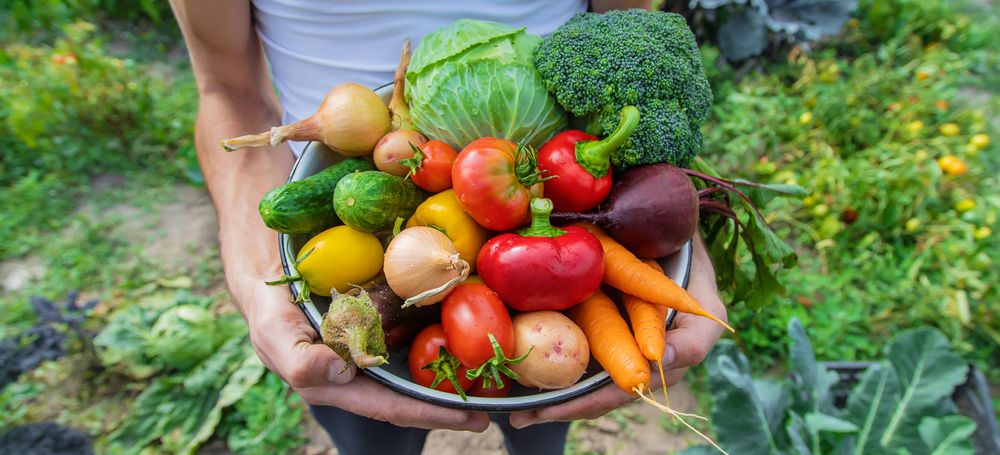
Welcome to the world of thrifty gardening, where the green of thriving plants meets the green in your wallet! As we delve into the art of growing your own food, we uncover the dual benefits of savings and health that this practice offers. Whether you have sprawling backyard space or a modest balcony in the city, you can cultivate a garden that nourishes both body and soul. So, roll up your sleeves and get ready to plant the seeds of a healthier, more cost-effective lifestyle.
Starting Simple: Planning Your Thrifty Garden
Embarking on your thrifty gardening journey begins with a plan. Start by considering what foods you and your family love to eat. There’s no point in growing a bumper crop of turnips if everyone turns up their nose at them! Focus on vegetables and herbs that are staples in your kitchen; these often include tomatoes, peppers, lettuce, and basil.
Next, evaluate your space. Even if you’re limited to a windowsill or small balcony, there are plenty of container and vertical gardening solutions that can maximize your growing area. For those with more room, raised beds or in-ground plots might be the way to go.
When it comes to seeds and plants, choose varieties that are known for their high yield and disease resistance. This will help ensure a bountiful harvest with less maintenance. Heirloom seeds might be a bit pricier upfront, but they can be saved at the end of the season for next year’s garden, extending your savings. Also, consider starting plants from seeds instead of buying seedlings; it’s not only cheaper but also incredibly rewarding.
Soil and Composting: The Foundations of Growth
A thrifty garden thrives on rich, fertile soil. Instead of spending money on expensive bagged soil and fertilizers, build your garden’s health from the ground up—quite literally—with compost. Composting is the ultimate recycling project: turning kitchen scraps and yard waste into garden gold. All it takes is a simple bin or designated pile in your yard, and nature does the rest.
Key ingredients for successful compost include green materials like fruit and vegetable scraps, which provide nitrogen, and brown materials like dried leaves and cardboard, which supply carbon. Keep your compost well-aerated by turning it regularly, and ensure it stays moist but not soggy. In time, you’ll have a continuous supply of nutrient-rich compost to feed your plants without costing you a dime.
If your space is limited, don’t fret! There are compact composting solutions, like worm bins, that can fit under a sink or on a balcony. These can process your organic waste and still supply a small garden with much-needed nutrients.
Water Wisely: Conserving Resources and Money
Water is the lifeblood of your garden, but it can also be a significant expense. To garden thriftily, it’s essential to use water wisely. Collecting rainwater in barrels is an excellent way to reduce your reliance on tap water and the costs that come with it. Just make sure to check your local regulations on rainwater harvesting before you begin.
When it’s time to water, do so early in the morning or late in the afternoon to minimize evaporation. Drip irrigation systems and soaker hoses can deliver water directly to the roots of your plants, where it’s needed most, and reduce water waste. Mulching around your plants will also help conserve moisture and suppress weeds, which means less watering and weeding for you.
If you’re using containers, choose self-watering ones or add water reservoirs to regular pots. This will cut down on your watering frequency and ensure that your plants have a steady moisture supply, even on the hottest days.
Pest Control: Natural Solutions for a Healthy Garden
Pests can be a thorn in the side of any gardener, but they don’t have to break the bank or introduce harmful chemicals into your environment. Thrifty gardening is all about natural solutions. Companion planting, for example, is a method where certain plants are grown together to mutually benefit each other. Marigolds, for instance, can deter pests from your vegetables with their pungent scent.
Another effective strategy is to encourage beneficial insects, like ladybugs and lacewings, which prey on common garden pests. Planting a variety of flowers and herbs can attract these helpful critters and keep pest populations in check.
For those persistent pests, homemade remedies like neem oil sprays or a simple soap and water solution can be just as effective as commercial pesticides. Remember to apply these treatments in the evening or early morning to avoid harming beneficial insects and to minimize the impact on your plants.
Harvesting and Preserving: Enjoying the Fruits of Your Labor
After all the planning, planting, and caring, comes the best part of thrifty gardening: the harvest. Picking vegetables and herbs at their peak not only ensures the best flavor but also the highest nutritional content. To extend the life of your harvest, learn the basics of food preservation.
Canning, freezing, and drying are all accessible ways to preserve your surplus produce. Tomatoes can be turned into sauces and salsas, herbs can be dried and stored for year-round use, and fruits can be frozen or turned into jams. These preserved goods can save you money during the off-season when produce prices are higher.
Don’t forget to save seeds from your best plants for the next planting season. This will not only save you money but also gradually create a stock of seeds that are well-adapted to your specific garden conditions.
Thrifty gardening is a rewarding endeavor that can lead to significant savings and a healthier lifestyle. By starting simple, focusing on soil and composting, conserving water, opting for natural pest control, and preserving your harvest, you can enjoy the benefits of a garden that’s as kind to your health as it is to your wallet. So why not start today? Your journey towards an abundant and cost-effective garden awaits!
